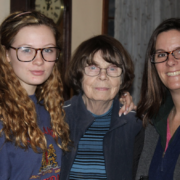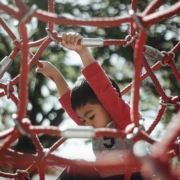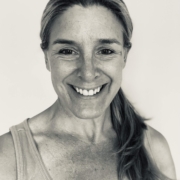Insightful Stories: Call and Chaos
Jill Canillas Daley
PYP LIbrarian, American International School of Lusaka
PART 1: CALL AND CHAOS
It’s the noise that makes your blood feel like an ice-laden river. It’s waking up out of a deep sleep at 1 in the morning to turn your buzzing phone over and see you have missed 23 calls and texts from your daughter and 11 from your husband in the course of a half hour. Fear brought me instantly awake knowing I was over 7,000 miles away from the source of those calls.
I grew up and spent 48 years in my small community in the eastern United States. I married a guy I had known and gone to school with since kindergarten, travelled little, and settled down 15 minutes from where I was born. My immediate family and friends all resided in the community around me. When I received an incredible opportunity to teach overseas, I took it with my family’s blessing thinking I would be back in a year. Little did I know, Zambia would pull me away from my hometown and keep my heart. I had heard Africa does that to you.

Image: New Hampshire
The urgency, “PLEASE wake-up,” “Mom, answer your phone,” fed my terror as I desperatly tried to return, my daughter, Es’s calls. It is incredible what the mind interprets and creates from assumptions. I finally got ahold of my husband, Bart, who said, “Your mom has fallen.”
My 86 year old mother is one of those small, independent, stubborn, Yankee women who quietly reside in their house by themselves. My father had passed away over a decade ago forcing my mom to become more self-sufficient. She manages well and is content with the life she had created. She stacks her own wood for the winter, and you better be prepared to face her wrath if you so much as touch a piece to help her.. She is fiercely independent and, of her own volition, gave up her driving license several years ago, but she still keeps the car.
“She’s fine, but call Es, she found her and is with her right now.” My hands trembled as I quickly hung up and dialed our daughter. My mom was ok, but our future care plans for her needed to be rapidly accelerated.
I am the legal caretaker of my mom. This had been decided long ago and we occasionally visited the topic. It isn’t something people want to discuss but do so out of necessity. We thought the plans in place were solid and sufficient; we were wrong. I call my mom weekly on the phone and chat for an hour or more. Technology evades and frustrates her so the iPad we purchased to connect, sits unused. Our conversations involved the grandchildren, pets, weather, and how we were both doing. Within the last year or so, we began to slowly put plans in place, together, to secure her future. However, we weren’t quite ready for this. It’s amazing how quickly you realize how ill prepared you are despite your best efforts.
Mom had a system for getting around town although she only goes to the grocery or doctor appointments as necessary. She is not a social person and prefers the solitude of her home and the comfort of close family and her pets. The pandemic took its toll and friends, who had randomly dropped in before, had stopped visiting. Isolation became a very real thing for everyone. My husband, and daughter, took turns stopping by once or twice a week to chat and make sure she was ok. We checked in with her several times a week and felt our system was effective. That all changed with one phone call.
We needed to put new systems in place and make more concrete plans to allow her to still be independent and remain in her house. Being 7 hours ahead of the eastern part of the States and continuing to teach in Zambia, made this no small feat for me. I was frantic and needed advice, support, and agencies to assist. That led to me getting up in the middle of the night to talk to friends who had connections and could share lists of reputable services to advise on the legalities and the next steps to be taken. I took copious notes, wrote lists of things that needed to be done, and tried to figure out what to do next in a timely manner. All of this, combined with my thoughts of guilt, were taking a toll on me. While I had colleagues and friends in my small expat community, I didn’t know where to turn for the support I needed.
I worried that I should go back to the States. I debated with myself over whether or not I was being a “good daughter.” I feared my expat life would be considered selfish. My parents, in my opinion, had raised me well and given me opportunities and support when I needed them. Was I turning my back on my mom to fulfill my needs while ignoring hers? I had accepted the responsibility of being her legal guardian, was I Ietting her down? I know staying in Zambia makes my inner self happy and allows me to be the best person I can be. I also knew going back indicated to everyone that my mom was no longer capable of being on her own. We needed new systems and some time to see if that allowed her to remain at home.
Being a librarian, I turned to my professional skills, I began to collect resources, I wrote emails, talked with my mom and family, and created a document of our actions. I listened to a podcast and found forums for families that were dealing with ageing parents. I didn’t find anything specific regarding expats but there were plenty of families that lived far from their parents. We began to slowly put plans in place. We outlined the goals, conversations, and schedules we needed at this point. We investigated agencies and networks. I looked into State laws, funding, and our rights. I found colleagues who were also dealing with ageing parents whose health was failing, and we began to meet during lunch once a week. I heard threads of similarities in their voices and stories.
I began to feel a small amount of control over the situation. In moving to Zambia, I had begun to embrace the philosophy of letting go of the things I have no control and putting energy and perspective into the things I do. My independent strong-willed mom has ideals and wishes. She wants to live her life her way and that needs to be honored.
However, we needed balance and reality and that was the next part of the journey.
PART 2: GUILT AND DEFEAT
The internet is a remarkable and dangerous resource. There is a tidal wave of misinformation that you sift through to obtain the desired treasures. After talking with friends and family back in the States regarding my elderly parent, I learned a lot about what I didn’t know. I needed to look into the laws of my state and look into the resources in my hometown community to see what was available as well as what she was qualified for.
I knew mom needed access to the basic care systems in life. We created a scheduled grocery/shopping plan for her. We looked into a food catering service, which we declined. We had her will written up but hadn’t set up a health directive. Her bills and payments were in the process of being turned over to me. We had been cleaning her house, but she was attached to so many things that it was difficult to remove stuff without protest. We needed a professional cleaning service to come in on a regular basis. She has a lifeline to call but didn’t use it. All of this needed to be addressed with respect and dignity for my mother’s wishes.
This was the beginning of my second post in a series; it had only been written a few months ago, but upon re-reading, it felt like a lifetime away. This piece in the series was outlined to discuss the plans I had in place to assist my mother with independent living. I was satisfied with the things I had accomplished, and yet again, my world came crashing down when mom was admitted to the hospital. Another frantic middle-of-the-night phone call came that blindsided me and made me realize, yet again, how inadequate we were to deal with the unraveling situation.
It was at this point that I began to understand that, unlike many illnesses or injuries that harm your children or partner, aging doesn’t get better or go away. It only progresses at an undetermined speed with twists and turns that change the plot at the drop of a hat. The issues that come with aging can plateau but they don’t resolve. My mother was struggling with poor eyesight, dementia, and something new called cellulitis. The plans I had so confidently made earlier, due to her fall, were now insignificant; this left me feeling defeated, similar to a lesson plan gone wrong during an educator observation.
I made the decision to fly back to my home country.
It was an impulsive decision made by the tendrils of guilt that were wrapping themselves around my conscience. My family was back in the States dealing with this while I, Mom’s caretaker, was 7,000 miles away. My guilt was further embraced with:
“My God, do emergency plane tickets cost this much? Can we afford this?”
“Sub-plans for all my classes, sure, no problem.”
“There is really only a few weeks of school left, can you just wait.”
The conscience can be an evil thing.
I got off the plane after a 20+ hour flight that cost almost a month’s salary, and knew there was no time for jetlag. I needed to hit the ground running and utilize what little time I had to get things in order. I was on a tight schedule with an uncompromising deadline.
The list of things to do never ceased nor slowed down. Once I accomplished one thing, another 10 popped up. A phone ring, email, notice, text ding, all were related to the situation, all needed to be dealt with now. Being an educator was a huge advantage at this point. I had literally spent years juggling plans, being flexible, wearing numerous hats ( referee, nurse, educator, mom etc) and being able to switch tasks without blinking an eye. I was organized, determined, and very good at creating systems; I could do this.
What I didn’t account for was the fact that I was already exhausted. My family was worn, you could see it in their faces as they tried to smile and hide their feelings. Mom was different, she seemed a little more lost and with that, a piece in each of us had tried to excuse that and forge on with hope lurking around the corners. Structure and practicality were great, but ignoring the emotional toll this was imparting was a dangerous game of roulette. We needed clarity and logic.
What did we want? What did she want?
With the elderly, safety is something for you to hold onto. It is not something they hold onto. I could keep my mother extremely safe by keeping her in the nursing home, but her quality of life would be severely diminished. She didn’t want that and neither did I. While her health was compromised, and she was suffering from dementia, she knew what was occuring. I wanted, above all, for her wishes to be granted, and she wanted to go back home. I made it my mission to make this happen.
I learned about the systems for the elderly in the USA and was disheartened and terrified for her future. Similar to young children, the elderly do not have a voice or choice. Financially it is a nightmare between nursing home fees, uncovered medication, and long term plans. I researched, talked to experts, and crunched numbers for hours. I tried to find ways to get her back home and keep her there. Our roles had reversed, and I was now her advocate where she had been mine for so long.
Sleep was impossible; my mind teemed with questions:
“What is her financial situation? Can we afford a new clothes dryer for her?”
“Who picks up the trash?”
“Why does she have the best internet plan but is incapable of operating an iPad?”
“An electrician can’t come until when?”
“Certified nursing care? Where do I find that?”
It was an endless cycle and the 2 weeks felt like two years. Never had I experienced such an explosion of tasks and “must-dos” in such a short time. I wondered if this experience would qualify me for a position as a doctor. Is this what their lives are like?

When I flew back to Zambia to finish off the school year, I felt even further behind. How could I accomplish everything for school, my family, and my mother without losing myself in this maelstrom? I am fiercely independent and the thought of leaning on others was foreign. However, I realized I couldn’t do it alone; I leaned into my friends, who were in similar situations, for reassurance, comfort, and sanity.
Wednesday lunch times became a haven for me while I listened to stories similar to mine. I was still working hard at school and with family issues, but my voice was being heard by people who understood my predicament. The guilt was crushing. The questioning non stop.
New plans were put in place. Knowing the value and efficiency of systems and routines, I realized those components were lacking outside the educational profession. I tried to lay out all the possibilities and networked for advice, help, and assistance. I documented everything and asked for input from family members and my mother. I began to sleep a little more and the nagging voice of my conscience quieted as well. I was accomplishing small steps to assist my mom while the school year seemed to be flying by and the end of the year expectations were in front of my eyes laying on my desk waiting to be completed.
I pushed through the school year with the support of my peers. I needed to be able to focus on my family during the holiday and realize I am not the warrior I thought I was.
PART 3 – CONNECTIONS, SUPPORT, SANITY
You can tell. It’s in the eyes. They always look sad, perhaps a bit frightened and maybe even contain a tear or two. It begins with, “Are you ok?” When you explain about your parents, you see the recognition in the eyes. It is always the same and rarely wavers. It is the compassion and understanding of someone who has already gone through this process. They know, they understand, and they empathize with you even if you are not strongly connected to them.
Hospitals: they can either bring great joy or great sadness. Once again the call came; it is an insidious loop that never changes. Mom was back in the hospital. We had just begun looking for a new home provider as we felt the current person was not meeting her needs. However, our search began too late, and mom was removed to the hospital for another infection.
Finding a home care provider is a tedious process. Finding a home care provider while being thousands of miles away is even more complex. Time was short so we used a private group on social media platform to advertise our needs. The responses were plenty and some were immediately dismissed due to poor grammar, I am an educator. Sifting through resumes and recommendations was, and is, so time consuming. Since my home town is quite small, I reached out to friends to inquire whether or not they knew the applicants. This narrowed the field further. However, I needed to put the applicants on hold. Mom needed rehabilitation after her hospital stay and the time frame for discharge is unclear.
It’s a juggling act of making a plan and being prepared while the winds of change swirl around every decision you make. The smallest recommendation or decision on funding from a government agency can change your plans in a second. Another pop up infection or fall can be a crippling set back. Putting applicants on hold while you try to gather information and make plans is like nothing I have ever experienced before.
I was feeling challenged and out of my league. My family was my eyes and ears back in the States. So many challenges, observations, and opinions to weigh. I was swirling. Guilt at making the wrong decision was pounding at the door. This is my mom’s life and betraying her trust in me was always a concept niggling at the corners of my conscience. I needed to talk to people face to face. I needed to see and hear reactions that weren’t on the screen or over the phone. There is something about using technology to communicate that is brilliant and efficient but lifeless and disconnected. I needed to vent with trusted friends in person.
The supportive lunch group I had begun continued to meet. However, as educators, our meetings were disrupted by other plans or obligations. During one of the few meetings we had held this year, I completely vented, sharing my situation, thoughts, and guilt. My friend leaned in attentively, made eye contact, nodded, teared up, and thoroughly listened to every aspect of my tirade. I complained about the healthcare system, finding home care people, and the amount of tasks that I needed to achieve including house repairs. Interwoven were the threads of grief and sorrow; feeling selfish while realizing that this is the ending of my mom’s life. She recognized this, and I could see the understanding and compassion in her eyes. She inquired if I felt better and, at that moment, I didn’t. My emotions and feelings were too raw and intense, I couldn’t reflect, I was too deep in the moment.
Later on that evening, as I was sitting eating dinner watching the sun go down, I realized what a gift that lunch-time rant had provided. I did feel some small release of guilt. It was the absolute human connection, face-to-face, with someone who understood, who was going through similar decisions and crushing guilt that helped. She didn’t offer solutions she offered compassion and understanding, that is what I needed.
My God, the realization that in my hands was the remnants of my mom’s life completely overwhelmed me. I thought back fondly to my childhood and remembered all the sacrifices my parents had made. I remembered the things given and the ones that weren’t. I understood why having a horse in the basement was an obstacle we could not overcome.A childhood dream seemingly crushed at the time. However, I know my parents did the best they could and provided me with what I needed. My mom only wants to go home. That is her only wish and desire. The back work and repercussions of this are magnanimous, but that is what she wants and has wanted all along. I cannot pick the easy road and leave her in the nursing home. I need to at least try and honor her wishes and bring her back to place of comfort and memories.
I reflected further and realized, that all along, this lunch group supported each other in this manner. We are the ones who are making the decisions for parents who live thousands of miles away. We get midnight calls raising the alarm and we make decisions based on what information we can gather. We can offer solutions to each other, but it is the contact, support, and connections that make this group a solid support system. I don’t think I could survive without them, and I hope it gives them with the same modicum of saneness it provides me.
The loop will remain the same; in and out of the hospital, midnight calls, but the ability to connect and talk is the basis to be able to heal. It is the connections that hold all of us up. I am so fortunate to have a caring compassionate community that allows me to feel and grow.
Voices from the inside
Laurence
I am almost 50, I am French, I left my home country, family and friends behind when I was 20 to move to the other side of the world – 6000 kms away from home and I have tried, successfully at times, to be more of a respectful immigrant than an arrogant expatriate in Zambia. So I really thought that I was prepared to handle whatever life throws at me. Then my mother, 76 years old, was diagnosed with Stage 2 Alzheimer… Being so far away and having not seen her for 2 years, due to Covid restrictions, the confidence and self-assurance I thought I possessed never actually materialised. It was easier in a way to be far away and to let my father handle everything, while I could laugh at my mom’s new idiosyncrasies, such as her being convinced that my dad’s phone ringing or pinging was the sign that he had his numerous mistresses trying to get in touch with him (which also made me wonder if dementia carries its own cultural biases: what is more French than an obsession with illicit liaisons?!).
Amongst the panic and overwhelming feelings, my friend and colleague Jill decided to organise a regular Wednesday lunch meeting for 3 kindred souls sharing the challenges of being the daughters of dementia-suffering parents. These free-to-share, free-to-listen and free-to-be-vulnerable meetings were extremely useful. The “Oh, my mom is not there” moments, the “Oh, I can so relate” moments, the “Oh, I did not think of that” moments, as well as the “I am not alone” moments were precious weekly experiences which helped me feel better equipped for what is to come, re-energised, less guilty to be far away from the problem and be more philosophical about the cycles of life. In South Africa, they use the term “Ubuntu”, which is a powerful term meaning “I am because we are”. It evokes compassion and humanity. I am extremely grateful to have found Ubuntu in our Wednesday gatherings.
Stephanie
I am 38 years old, a single child, born and raised in Canada. At the age of 25, I met my husband and after much debate and discussion, we decided to settle in his home of Lusaka, Zambia. I always anticipated that one day, this decision to move so far away from my family would be difficult to manage. So much so, that I never wanted to think about it. This distance of 13,000 kilometers or 26 hours of travel meant that visits home were carefully calculated. As our family grew and our two boys were born, we felt the financial strain, but also the increasing need to spend time with my aging parents; to build quality memories and enjoy the time while we could. As with many, the onset of Covid paused all family visits for us for two years. During this time, my father, at the age of 77, experienced a fall down a flight of stairs in the night. As parents do, my mother waited a few days before informing me of this incident and assured me not to worry. To travel at this point would be too risky. Covid had just hit another wave. I was alone and felt so helplessly far away. What should I do? How could I support my parents? Should I travel and leave my two children and husband indefinitely? What if I became sick and couldn’t return? Or worse, what if I passed Covid on to my parents? I decided to stay in Zambia and support remotely until the time seemed better. The decision weighed on me heavily.
My friend Jill reached out to invite me to join a Wednesday lunch meeting. Three of us would meet once a week to share stories, listen, sympathize, empathize, share frustrations, share ideas, or look for the bright side to lighten the mood.
When my father’s diagnosis changed from delirium caused by his fall, to a state of permanent dementia, I needed to share the anguish with others who would understand. The support that I urged my mother to seek in her community, I found within my own school community. There is no simple solution, but sharing what I’m going through with other educators – who have since become dear friends – has allowed me to make peace with my decisions. When I become overwhelmed by guilt about neglecting my responsibility to my parents, my Wednesday lunch friends remind me of the reasons why I have chosen to live in Zambia. They offer balance and shed light in the dark corners, which to me, is the best form of mental health support. We don’t know what the future holds, but I do know that having a supportive community is the way to make it through.

Jill with her mom and daughter.
ABOUT THE AUTHOR
Jill Canillas Daley is currently the PYP LIbrarian at the American International School of Lusaka. She has spent over 30 years in education in the United States and, six years ago, moved overseas to Zambia. She considers herself a life-long learner and is often in a MOOC or reading professional material. She adores her husband of 23 years, adult children, and mother who resides in the States. Her passions include animal rescue, reading, wildlife photography, and wild adventures in the bush with family and friends. She is an avid Twitter fan and loves to connect with others, her handle is @jcd118.
















